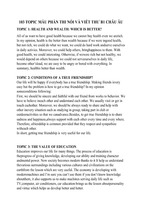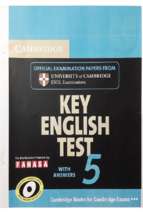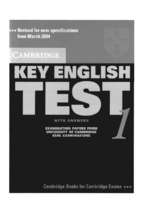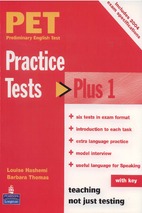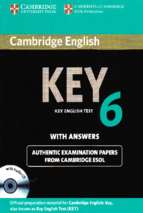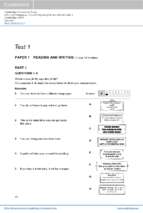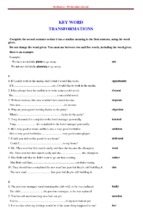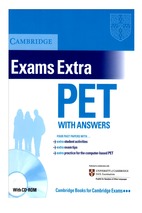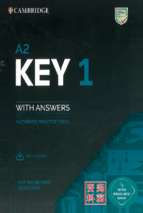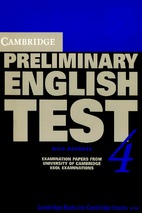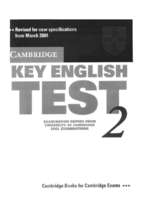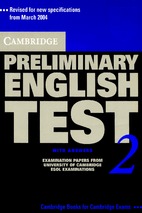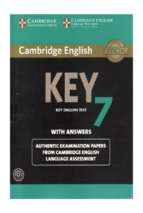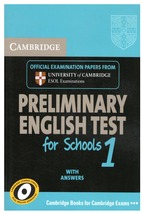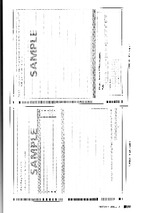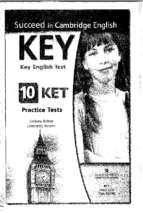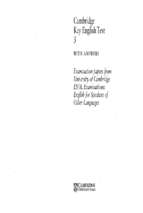A Grammar for Reading and Writing
(adapted from http://www.critical-reading.com/grammar_reading_writing.htm)
We do not read words, one by one. Meaning is contained not so much in
individual words as in collections of words conveying broader or more specific
ideas.
Readers thus make sense of a sentence by breaking it into meaningful chunks
and examining their interrelationships. Skillful writers focus not so much on
individual words, as on creating and rephrasing larger phrases and clauses.
The topics covered here describe the "meaningful chunks" of English sentence
structure. In so doing they examine key grammatical principles underlying
effective reading and writing.
Speaking Constructions, Not Words
When discussing speech, we say we know something when we can repeat it "word
for word." Yet, when we speak, we do not really speak "one word at a time." We
break the flow of words into chunks. And we do not do this randomly, simply to
take a breath now and then. We insert pauses to break the flow into meaningful
chunks. We do not say
I left my
raincoat on the
chair.
We say:
I left my raincoat
on the chair.
When we break a sentence into portions, whether by pauses or intonation, we are
actually doing grammatical analysis. We break the sentence into chunks to
facilitate understanding.
Reading and Writing Constructions, Not Words
Words appear on a page one word after another. Yet readers do not read word by
word, one word at a time. As with speech, we find meaning by grouping words
into larger units.
You might think that you read the previous sentence word by word:
As with
larger units.
speech,
we
find
meaning
by
grouping
words
into
Yet meaning becomes apparent only when you see the line somewhat as:
As with speech,
we find meaning
by grouping words
into larger units.
It makes little difference whether we call these units chunks or use more
technical terminology (such as phrases and clauses , or the more general term
constructions ), the point is the same: We read chunks, not individual words.
The observations above suggest a test: Listen to someone read a passage aloud.
You can gauge their understanding by how easily they group words into
meaningful chunks as they read.
Ambiguity
The mental process involved in finding meaning in a string of words is most
apparent when various alternative readings make sense that is, in situations that
are ambiguous.
She did not marry him because she loved him.
Are they married? It depends on how you read the sentence:
She did not marry him
because she loved him.
They are not married.
She did not
marry him because she loved him.
She married him for other reasons.
We find meaning by deciding on a meaningful way to analyze the sentence. In so
doing we often attempt to recreate the natural pauses and emphasis that might
indicate structure were the words spoken.
Try another one.
The drunk driver hit her head on Wednesday
Who was hit? How? Do we know the gender of the driver? Do we know the nature
of the accident?
In an effort to make sense of the sentence, we analyze it various ways.
The drunk driver
hit her head
The drunk driver
hit her
The drunk driver
hit
on Wednesday
head on
her head
Wednesday
on Wednesday
We find meaning by finding ways to break the sentence into meaningful chunks.
In the first, the driver's own head is injured on a specific day. The driver is
female.
The drunk driver
hit her head
on Wednesday
In the second instance, the driver hit a female in a head on collision.
The drunk driver
hit her
head on
Wednesday
In the third, and more improbable, alternative a drunk driver somehow hit a
female's head.
The drunk driver
hit
her head
on Wednesday
Maybe she was leaning over into traffic!
Should we come upon such a sentence
within a text, we would look to the context to decide which reading is appropriate.
Structure and Meaning
Finally, consider the following three sentences:
1. The boy ate the apple in the pie.
2. The boy ate the apple in the summer.
3. The boy ate the apple in a hurry.
At first glance, the three sentences seem to have the same structure.
1. The boy
ate
the apple
in the pie.
2. The boy
ate
the apple
in the summer.
3. The boy
ate
the apple
in a hurry.
As we try to find meaning in the sentences, however, we discover that their
structure is different:
1. The boy ate
the apple in the pie.
2. The boy ate the apple
3. The boy
in the summer.
ate the apple in a hurry.
how we break a sentence up.
Punctuation often helps in this effort, but punctuation marks only certain
boundaries. There is the story of the English teacher who wrote the following
words on the board and asked the students to punctuate the sentence:
Woman without her man is nothing.
Students came away with different meanings, depending on how they grouped
the words. (Reach an understanding of the sentence yourself, then see the
footnote for the results.) (1)
Slots, Constructions, and Meaning
Once we recognize that we actually read chunks, we might then ask:
·
How do we recognize chunks?
What do they look like?
And that leads to two other questions:
·
·
Where in a sentence do these chunks normally fall, and
What meaning can we attach to a particular chunks that is, to a
particular grammatical construction occurring in a particular position in
a sentence?
Complete Reference: The Noun Phrase looks at the most common construction in
English sentences. Other sections identify particular positions or slots within a
sentence and the meaning attached to the various constructions appearing in
those positions.
(1) Some read the words as:
Woman, without her man, is nothing.
Others read the same words as:
Woman! Without her, man is nothing.
We find, to a great extent, what we want to find!
Complete Reference: The Noun Phrase
Full References
The discussion of the choice of language noted that a single concept is often
signaled by a variety of words, each word possessing slightly different
connotations. We can indicate that people are less than content by saying they
are angry , irate , incensed , perturbed , upset , furious , or mad. The broader our
vocabulary, the greater our options and the more precisely we can convey our
meaning.
And yet no matter how wide our vocabulary may be, a single word is often
insufficient. A single word, by itself, can appear somewhat vague, no matter how
specific that word might seem. The term `dog’ may be specific compared to
`mammal,’ but it is general compared to `collie.’ And `collie’ is general compared
to `Lassie.’ Then again, many different dogs played Lassie!
Suppose you want to indicate a female person across the room. If you don’t know
her name, what do you say?
That girl.
If there were more than one, this alone would be too general. It lacks specificity.
The girl in the blue Hawaiian shirt
x
The taller of the two cheerleaders by the water cooler
When a single term will not supply the reference we need, we add terms to focus
or limit a more general term. Instead of referring to drugs in a discussion, we
might refer to hallucinogenic drugs. We might distinguish between hard drugs and
prescription drugs . In so doing we modify the notion of a drug to describe the
specific one, or ones, we have in mind. (Then again, at times we are forced to
use many words when we cannot recall the one that will really do, as when we
refer to that funny device doctors pump up on your arm to measure blood
pressure instead of a sphygmomanometer ).
This section examines how we construct full and specific references using noun
phrases. An ability to recognize complete noun phrases is essential to reading
ideas rather than words. A knowledge of the various possibilities for constructing
extended noun pharses is essential for crafting precide and specific references.
Nouns
To begin our discussion, we must first establish the notion of a noun.
English teachers commonly identify nouns by their content.
They describe
nouns as words that "identify people, places, or things," as well as feelings or
ideas—words like salesman , farm , balcony , bicycle , and trust.
If you can
usually put the word a or the before a word, it’s a noun. If you can make the
word plural or singular, it's a noun. But don't worry...all that is needed at the
moment is a sense of what a noun might be.
Noun Pre-Modifiers
What if a single noun isn't specific enough for our purposes?
modify a noun to construct a more specific reference?
How then do we
English places modifiers before a noun. Here we indicate the noun that is at the
center of a noun phrase by an asterisk (*) and modifiers by arrows pointed
toward the noun they modify.
white
house
*
large
man
*
Modification is a somewhat technical term in linguistics. It does not mean to
change something, as when we "modify" a car or dress. To modify means to limit,
restrict, characterize, or otherwise focus meaning. We use this meaning
throughout the discussion here.
Modifiers before the noun are called pre-modifiers.
noun together form a noun phrase .
NOUN
All of the pre-modifiers that are present and the
PHRASE
pre-modifiers noun
*
By contrast, languages such as Spanish and French place modifiers after the noun
casa blanca
white house
*
homme grand
big man
*
The most common pre-modifiers are adjectives, such as red , long , hot . Other
types of words often play this same role. Not only articles
the
water
*
but also verbs
running
water
*
and possessive pronouns
her
thoughts
*
Premodifiers limit the reference in a wide variety of ways.
Order:
second, last
Location:
kitchen, westerly
Source or Origin:
Canadian
Color:
red, dark
Smell:
acrid, scented
Material:
metal, oak
Size:
large, 5-inch
Weight:
heavy
Luster:
shiny, dull
A number of pre-modifiers must appear first if they appear at all.
Specification:
a, the, every
Designation:
this, that, those, these
Ownership/Possessive:
my, our, your, its, their, Mary’s
Number:
one, many
These words typically signal the beginning of a noun phrase.
Some noun phrases are short:
the table
*
Some are long:
the second shiny red Swedish touring sedan
*
a large smelly red Irish setter
*
my carved green Venetian glass salad bowl
*
the three old Democratic legislators
*
Notice that each construction would function as a single unit within a sentence.
(We offer a test for this below,)
The noun phrase is the most common unit in English sentences.
That
prevalence can be seen in the following excerpt from an example from the section
on the choice of language:
The stock market’s summer swoon turned into
Monday as the Dow Jones industrial average plunged.
The stock market’s summer swoon turned into
*
a
dramatic
rout
a dramatic rout
*
Monday as the Dow Jones industrial average plunged.
*
*
To appreciate the rich possibilities of pre-modifiers, you have only to see how
much you can expand a premodifier in a noun phrase:
the
the
the
the
the
the
the
book
history book
American history book
illustrated American history book
recent illustrated American history book
recent controversial illustrated American history book
recent controversial illustrated leather bound American history book
Noun Post-Modifiers
We were all taught about pre -modifiers: adjectives appearing before a noun in
school. Teachers rarely speak as much about adding words after the initial
reference. Just as we find pre -modifiers, we also find post -modifiers—
modifiers coming after a noun.
The most common post-modifier is prepositional phrases:
the book on the table
*
civil conflict in Africa
*
the Senate of the United States
*
Post-modifiers can be short
a dream
*
or long, as in Martin Luther King Jr.’s reference to
slaves
a dream that one day on the red hills of Georgia the sons of former
*
and the sons of former slaveowners will be able to sit down together
at a table of brotherhood.
What does King have? A dream? No. He has a specific dream. Once we are
sensitive to the existence of noun phrases, we recognize a relatively simple
structure to the sentence. Here we recognize a noun phrase with a very long
post-modifier—thirty-two words to be exact.
We do not get lost in the flow of words, but recognize structure. At the point that
we recognize structure within the sentence, we recognize meaning. (Notice also
that post-modifiers often include clauses which themselves include complete
sentences, as in the last example above.)
Post-modifiers commonly answer the traditional news reporting questions of who
, what , where , when , how , or why . Noun post-modifiers commonly take
the following forms:
prepositional phrase
the dog in the store
*
_ing phrase
the girl running to the store
*
_ed past tense
the man wanted by the police
*
wh - clauses
the house where I was born
*
that/which clauses
the thought that I had yesterday
*
If you see a preposition, wh - word ( which, who, when where ), -ing verb form, or that or which after
a noun, you can suspect a post-modifier and the completion of a noun phrase.
The noun together with all pre- and post-modifiers constitutes a single unit, a
noun phrase that indicates the complete reference. Any agreement in terms of
singular/plural is with the noun at the center.
The boys on top of the house
are .............
*
Here the noun at the center of the noun phrase is plural, so a plural form of the
verb is called for (not a singular form to agree with the singular house) .
The Pronoun Test
In school, we were taught that pronouns replaced nouns .
Not so.
Pronouns
replace complete noun phrases .
Pronoun replacement thus offers a test of a
complete noun phrase. Consider:
The boy ate the apple in the pie.
What did he eat?
The boy ate
the apple in the pie.
*
Want proof? Introduce the pronoun `it’ into the sentence.
replaces a noun, we’d get
*The boy ate
No native speaker would say that!
The boy ate
If a pronoun truly
the it in the pie.
They’d say
it.
The pronoun replaces the complete noun phrase, the apple in the pie .
Boxes Within Boxes: Testing for a Complete Noun Phrase
The goal of reading, we noted above, is not to recognize grammatical features,
but to find meaning.
The goal is not to break a sentence or part of a sentence
into as small pieces as possible, but to break it into chunks in such a way that
fosters the discovery of meaning.
Consider one of the examples above of a prepositional phrase as a post-modifier:
the book on the table
Book is a noun at the center of the noun phrase.
But table is also a noun.
we analyze the noun phrase completely, on all levels, we find:
If
the book on the table
*
on the table
*
We can have prepositional phrase within prepositional phrase within prepositional
phrases:
…the book on the table in the kitchen…
*
on the table in the kitchen…
*
in the kitchen …
*
We don't want to recognize every little noun phrase. We want to recognize the
larger ones that shape the meaning.
The book is not "on the table."
The
book is "on the table in the kitchen."
The Senate of the United States is composed of two legislators from each State.
Question: Who is in the Senate?
a) two legislators
b) two legislators from each State?
The answer is b). The full Senate consists of two from each state (100 people),
not simply two! We read the sentence as
The Senate of the United States
is composed of
two legislators from each State.
*
If we read the sentence as
The Senate of the United States
is composed of two legislators
from each State.
we miss the meaning.
Earlier we noted that pre -modifiers in noun phrase can be expanded to
significant length. For the most part, we increased the length of the pre-modifier
by adding additional adjectives, a word or two at a time.
Noun phrase post
-modifiers can be expanded to much greater lengths.
We can add long phrases
which themselves contain complete sentences.
the park where I hit a home run when I was in the ninth grade .
*
The sentence within the post-modifier is printed in boldface.
The following sentence indicates something was lost.
What was lost?
He lost the book by Mark Twain about the Mississippi that he took out of
the library on Sunday before the game so that he could study during half
time when his brother was getting popcorn.
The answer is the complete phrase
……… the book by Mark Twain about the Mississippi that he took out of the
library on Sunday before the game so that he could study during half time
when his brother was getting popcorn.
The base term book is modified as to author (Mark Twain), topic (about the
Mississippi), as well as intent or purpose (that he took out of the library on
Sunday before the game so that he could study during half time when his brother
was getting popcorn.) We assume that he has another book by Twain about the
Mississippi that he did not lose. Want proof? What would be replaced by `it’?
The full reference of a noun phrase is often `conveniently’ ignored in movie
advertisements. Janet Maslin, movie critic for The New York Times , complained
when an advertisement for the video tape of John Grisham’s "The Rainmaker"
quoted her as describing the movie as director Francis Ford Coppola’s `best and
sharpest film,’ when, in fact, her review stated:
John Grisham’s "The Rainmaker" is Mr. Coppola’s best and sharpest film in
years. (1)
The original quotation does not refer to the `best and sharpest film’ of Coppola’s
career, but to his `best and sharpest film in years.’
Noun Phrases: The Dominant Construction
Finally, the degree to which noun phrases are the dominant construction within
texts can be seen in the opening paragraph of the Text for Discussion: Annotation
- Needle Exchange Programs and the Law - Time for a Change. The complete
noun phrases appear within square brackets and appear in red.
(1) In [ his social history of venereal disease ], [ No Magic Bullet ], [ Allan M.
Brandt ]describes[ the controversy in the US military about preventing venereal
disease among soldiers during World War I ]. Should there be [ a disease
prevention effort that recognized that many young American men would succumb
to the charms of French prostitutes ], or should there be [ a more punitive
approach to discourage sexual contact ]?
Unlike[ the New Zealand
Expeditionary forces ], which gave[ condoms ]to[ their soldiers ],[ the United
States ]decided to give [ American soldiers ][after-the-fact, and largely
ineffective, chemical prophylaxis ]. [ American soldiers ]also were subject to
[ court martial ] if they contracted[ a venereal disease ]. [ These measures ]
failed. [ More than 383,000 soldiers ]were diagnosed with[ venereal diseases ]
between April 1917 and December 1919 and lost [ seven million days of active
duty ]. [ Only influenza ], which struck in [ an epidemic ], was [ a more
common illness among servicemen ].
Implications For Reading and Writing
The above discussion introduces a number of concepts crucial to effective reading
and writing.
We do not read texts word by word, but chunk by chunk.
We must read
each grammatical construction as a single unit. Deciphering sentences
involves isolating phrases within a sentence and recognizing where long
phrases begin and end.
To write well is not to string words together, but to string together larger
phrases, to create full references that carefully distinguish one idea from
another, going beyond talking in vague generalities. We can increase the
clarity and sophistication of our thought by using extended phrases
instead of single words.
Sophisticated thought is qualified thought. Intelligent discussion goes beyond
either/or or black-or-white views of the world to recognize nuances and
distinctions.
Remarks can be
extended (made broader or more general) ,
qualified (restricted in some way), or
limited (made more specific or less encompassing).
We don’t really make sentences longer by adding at the end so much as
expanding each chunk
Good writers carefully distinguish between all, most, many , some, few, and one.
They specify the specific time, condition, or circumstances an assertion is true.
Some claims are made for certain, some "in all probability" or "within a specific
margin of error," some for given conditions.
Good writers carefully distinguish between all, most, many, some, few, and one.
They specify the specific time, condition, or circumstances an assertion is true.
Some claims are made for certain, some "in all probability" or "within a specific
margin of error," some for given conditions.
When drawing careful distinctions, authors are not being wishy-washy or nit
picking. They are simply being precise. They are saying exactly what they want to
say or feel secure in saying based on the available evidence. Weak writers can
achieve an immediate gain in the level of thought of their writing by taking
advantages of the opportunities for adding pre- and post-modifiers.
For writers, this model is a reminder of the opportunity to extend, limit, or
otherwise shape a specific idea. You can greatly increase the sophistication and
depth of thought of your work by taking advantage of these pre- and postmodifier "slots". Having written a statement, you might go back in editing to see
how you can further shape your thoughts by making use of these slots.
The Constitution is the nation’s charter, and lawmakers should resist the
temptation to push for amendments every time an election year rolls
around.
Notice how much richer the next sentence is (additional modifiers in bold face) .
The Constitution of the United States is the nation’s bedrock charter,
and devoted lawmakers sworn to uphold it should resist the
dangerous temptation to push for pandering amendments every time an
election year rolls around.
(1) Janet Maslin, `When Phrases That Flatter Are Misused,’ The New YorkTimes ,
Arts & Leisure section, August 23, 1998, p. 9.
Sentence and Predicate Modifiers
At times when reading, we come away with little, if any, understanding. We see
the trees, but not the forest.
We may miss the meaning for a number of reasons. We may not know the
meaning of certain words or the concepts to which they refer. Even when we
understand the words, we may come away with little understanding because the
writing itself is particularly complex. In this latter instance, it is often helpful to
apply grammatical analysis, to consciously attempt to break the sentence into
meaningful units.
A Model Of English Sentence Structure
All English sentences follow the same basic formula. All speakers of the language
are familiar with that formula, and yet this model is rarely if ever taught. (1) The
discussion here lays that formula out.
The discussion of noun phrases demonstrated the need to recognize grammatical
constructions as complete units. There we were concerned with a single
grammatical construction irrespective of where it appeared within a sentence.
This section looks more broadly at the sentence as a whole. It identifies various
positions or slots within the sentence and discusses how constructions appearing
within these slots shape the meaning of the sentence as a whole. In so doing, the
discussion shows you how to make sense of complex sentences when you come
across them in your reading, and how to construct them in your own writing.
Simple, Compound, and Complex Sentences
Simple sentences contain a subject and predicate--a topic and a statement about
that topic. More complicated sentences can be formed by stringing elements of a
simple sentences together to make compound sentences or by adding other
elements to make a complex sentence . These pages focuss on three ways of
expanding a simple sentence into a complex sentence:
Sentence Modifiers
Predicate Modifers
Inserts
For background discussion of simple and compound sentences, see Simple
Sentences .
Review: Sentence and Predicate Modifiers
We read all sentences with a dual awareness of both meaning and structure. We break each sentence
into meaningful chunks and figure out their grammatical relationships:
Recall our three model sentences:
1. The boy ate the apple in the pie.
2. The boy ate the apple in the summer.
3. The boy ate the apple in a hurry.
We can now see how we analyze these sentences differently to find meaning.
Using the notation above, we now see the following structures:
1. The boy
ate
the apple in the pie.
*
[
2. The boy ate the apple
3. The boy
in the summer.
ate the apple
{
in a hurry
}
To understand each sentence, we must analyze the relationship of its parts. That
process is made easier with a knowledge of and a feeling for the various possible
relationships: here noun modifiers, sentence modifiers, and predicate modifiers.
Remember the sentence
He did not marry her because he loved her.
The two meanings stem from two equally legitimate analyses. In the analysis
He did not marry her
[
because he loved her
they are not married. The phrase
because he loved her
is in the end sentence modifier slot that modifies the remainder of the sentence.
We can test this by shifting the final construction from the end to the front slot.
He did not marry her
Because he loved her ,
because he loved her
he did not marry her
Note the addition here of the comma when the front slot is filled.
In the analysis
He did not marry her
because he loved her
they still might be married for other reasons. The phrase
because he loved her
is determined to be in the predicate modifier slot, indicating a reason for
marrying.
He did not marry her
{because he loved her}
Examples
Other instances of grammatical ambiguity typically appear in headlines, as the
following.
Lung Cancer in Women Mushrooms
We can now read this as a reference to a certain disease
Lung Cancer in Women Mushrooms
*
Female mushrooms have cancer!
Lung Cancer in Women
Or as an event
Mushrooms
*
Cancer in women is increasing—obviously the intended meaning!.
Analyze the following yourself.
·
Reagan Wins on Budget, But More Lies Ahead
·
Juvenile Court to Try Shooting Defendant
·
Two Sisters Reunited after 18 Years in Checkout Counter
·
Squad Helps Dog Bite Victim
·
Hospitals are Sued by 7 Foot Doctors
·
Killer Sentenced to Die for Second Time in 10 Years
Other examples can be found in "The Lower case" section of the Columbia
Journalism Review : (5) :
Thai Hospital Admits Starving Refugee Babies
The Cambodia Daily , 2/26/98
Salad still good after 50 years
Tribune-Star (Terra Haute, Ind.) 3/11/98
Transportation department to hold public meetings on I-49
The Times (Shreveport, La.) 3/19/98
MEDIA: Some Fear Coverage Reflects Judgment
Los Angeles Times 1/29/98
Can you distinguish between ambiguity of word meaning and grammatical
ambiguity?
Implications For Reading
What does the above analysis do for us? To find meaning in a sentence, we
must break it into meaningful parts, and we must understand how those parts are
related to each other.
When we group words into larger constructions, we accomplish two goals. First.
we reduce the complexity of the sentence as a whole into smaller, more
manageable parts. In so doing, we group words to identify complete references.
The meaning we come away with depends on how we break up (analyze) a
sentence.
The best strategy is to initially break the sentence into a few parts. Locate a basic
simple sentence and identify how any remaining constructions are related to that
basic simple sentence. The slot model offers a template for that effort.
Earlier we recognized King's full dream. Within the construction defining that
dream we can now recognize a time, a location, and an event:
one day
on the red hills of Georgia
the sons of former slaves and the sons of former slaveowners will be able
to sit down together
at a table of brotherhood.
We find a complex sentence consisting of two front sentence modifiers followed
by a simple sentence with a predicate modifier at the end
one day
]
on the red hills of Georgia
]
the sons of former slaves and the sons of
former slaveowners will be able to sit down together
{
at a table of brotherhood.
Finally, consider the following sentence:
When Ulysses S. Grant and Robert E. Lee met in the parlor of a modest
house at Appomattox Court House, Virginia to work out the terms for the
surrender of Lee's Army of Northern Virginia, a great chapter in American
life came to a close and a greater chapter began.
At first, this appears to be a long and complex sentence. When we draw on the
notions reviewed above, however, we see that its structure is really simple. We
have a front sentence modifier
When Ulysses S. Grant and Robert E. Lee met in the parlor of a modest
house at Appomattox Court House, Virginia to work out the terms for the
surrender of Lee's Army of Northern Virginia,
]
a great chapter in American life came to a close and a greater
chapter began.
followed by a series of simple sentences
a great chapter in American life came to a close and
a great new chapter began
To test this analysis, try shifting the modifier:
A great chapter in American life came to a close, and
a great new chapter began.
[
when Ulysses S. Grant and Robert E. Lee met in the parlor of a
modest house at Appomattox Court House, Virginia to work out the
terms for the surrender of Lee's Army of Northern Virginia.
The large construction passes the test for a sentence modifier. While that large
construction may be the most interesting piece of the sentence, it is not the most
crucial to the meaning. The main idea of the sentence is about great chapter(s)
beginning and ending. The large construction does not identify or describe those
chapters; it only says when the shift came.
Implications For Writing
The "slot" model of sentences developed above offers a template into which to fit
constructions in the effort to make sense of sentences. The same model offers
writers opportunities to qualifying references and ideas in terms of place, quality,
time, purpose, type, extent, or conditions. Writing that does not make use of
the sentence modifier, predicate modifier, and insert slots can be decidedly
childlike in expression and simplistic in thought.
(1) The discussion is based on Robert L. Allen, English Grammars and English
Grammar , Scribner's, Scribner's, 1972. Out of print.
(2) Letter to Editor, The New York Times , May 8, 1998 (Printed May 12, 1998),
by Charlton Heston, NRA First Vice-President
(3) William H. Dunlop, Letter to the Editor, The New York Times , Austin edition,
June 10, 1998, p. A28.
(4) Pete Hamill, Twenty Seven Words-The Bloody Problem of the Second
Amendment , (Mightywords, 2000), www.mightywords.com, p. 4.
(5) The examples from March/April and May/June 1998 issues.
Sentence Modifiers
The sentence modifier slot holds constructions that modify the remainder of the sentence, much as
pre- and post-modifiers modify a central noun in a noun phrase.
pre-modifier
noun
post-modifier
———
————
*
SENTENCE MODIFIER ] subject + predicate
[ SENTENCE MODIFIER
We shall mark front and end sentence modifiers with the notion
front modifier ] ................................ [ end modifier
Recall the second model sentence from the set of three at the introduction to this section:
2.
The boy ate the apple
[
in the summer.
Here the final phrase, in the summer , modifiers the earlier sentence as a whole. It indicates when the
boy at the apple.
What proof do we have that this last phrase really modifiers the remainder of the sentence as a
whole?
The proof lies in the fact that
the main portion can stand alone as a simple sentence, and
The boy ate the apple.
the modifier portion of the sentence can be shifted between the front and back without
essentially changing the meaning.
(Emphasis may change slightly, and there is a stylistic convention of putting short sentence modifiers
first.)
The boy ate the apple
In the summer
in the summer .
The boy ate the apple.
There are, in effect, front and end "slots" that can be filled with comments on the remainder of the
sentence. You can, with little trouble imagine all sorts of comments that might be inserted into the
sentence modifier slots at the front and end of the sentence.
________________ ] the boy ate the apple
[ ________________
Note that in the test for a sentence modifier does not work with the other two of the three sample
sentences:
1. * In the pie.
the boy ate the apple.
3. * In a hurry
the boy ate the apple.
Here the sentences are clearly incorrect, or at least awkward. We will explain what is happening in the
final model sentence in a moment.
Grammatical Constructions Filling Sentence Modifier Slots
Any slot in a sentence can be described in terms of the position of that slot, the constructions that can
fill that slot, and the meaning imparted by construction within that slot.
Sentence modifier slots can be filled by anything from a single word,
Yesterday,
to long phrases.
Whenever it rains, …
After the game was over and we had lost our third game...
Because it would be senseless any other way...
Content
Sentence modifiers typically
qualify (in what way, under what conditions),
limit, or set conditions or circumstances (for whom, why, when, where), or
indicated reasons or conclusions.
Punctuation
Sentence modifiers generally take a comma when they appear at the front of a sentence and are more
than a single word. No comma ever appears before a sentence modifier in the end position.
SENTENCE MODIFIER ] , _______________________
[ SENTENCE MODIFIER
The comma brackets off the front sentence modifier. Stylistically, shorter constructions appear early,
and after a comma; longer one's appear at the end.
Tactics and Strategies
Some basic tactics and strategies for reading and writing should be apparent.
You can make better sense of long and complicated sentence by attempting to recognize sentence
modifiers.
If a sentence begins with a word like whenever , after , because, or in , the odds are you have a
sentence modifier in the front slot. If a sentence begins with the, a, every, or my , that is, with any
of the words that commonly begin noun phrases, the odds are that there is no sentence modifier in
the front position. But there may still be one in the end position.
As a writer, you can shape your thoughts more carefully and specifically by adding sentence modifiers.
When or where is this true? Why is this the case? Under what circumstances does the remark
apply?
Examples
Amendment II, U. S. Constitution
A well regulated Militia, being necessary to the security of a free State, the right of the
people to keep and bear Arms, shall not be infringed.
How should we understand this amendment? Is the right to bear arms a right designed only to assure
a well regulated militia, or a broader right? To Charlton Heston, President of the National Rifle
Association, the answer is clear:
The Founders' intent in framing the Second Amendment is perfectly clear and undeniable.
Thomas Jefferson wrote, "No man shall ever be debarred the use of arms." ....
Some anti-gun elitists declare this notion outdated. However, many constitutional scholars
from this country's most prestigious universities agree that the Founders' intent is clear and
irreversible: To "keep and bear arms" is a right for all law-abiding citizens. (2)
To William H. Dunlop, the situation is quite different:
The words "Second Amendment" and "keep and bear arms" will be bandied about ad
infinitum, but just as in the N.R.A.s ads, the full amendment will never be seen or heard.
Why not? Because the first half of the amendment's "well-regulated militia, being necessary
to the security of a free State" clearly limits the meaning of the second half, 'the right of the
people to keep and bear arms, shall not be infringed." (3)
Or, in the words of novelist and journalist Pete Hamill,
To most literate people, this sentence [the amendment] obviously connects the right to keep
and bear arms to the existence of a well-regulated militia. The words seem to say what they
do say. That is, the right to keep and bear arms is essential to the existence of a wellregulated militia. (4)
This is not the only instance in which a "constitutional comma" matters. During early negotiations the
Constitutional Convention of 1787 agreed to include:
The Legislature of the United States shall have the power to lay and collect taxes, duties,
imposts and excises.
The sentence was later extended to indicate how this money was to be spent
The Legislature of the United States shall have the power to lay and collect taxes, duties,
imposts and excises, to pay the debts and provide for the common defense and general
welfare.
- Xem thêm -

